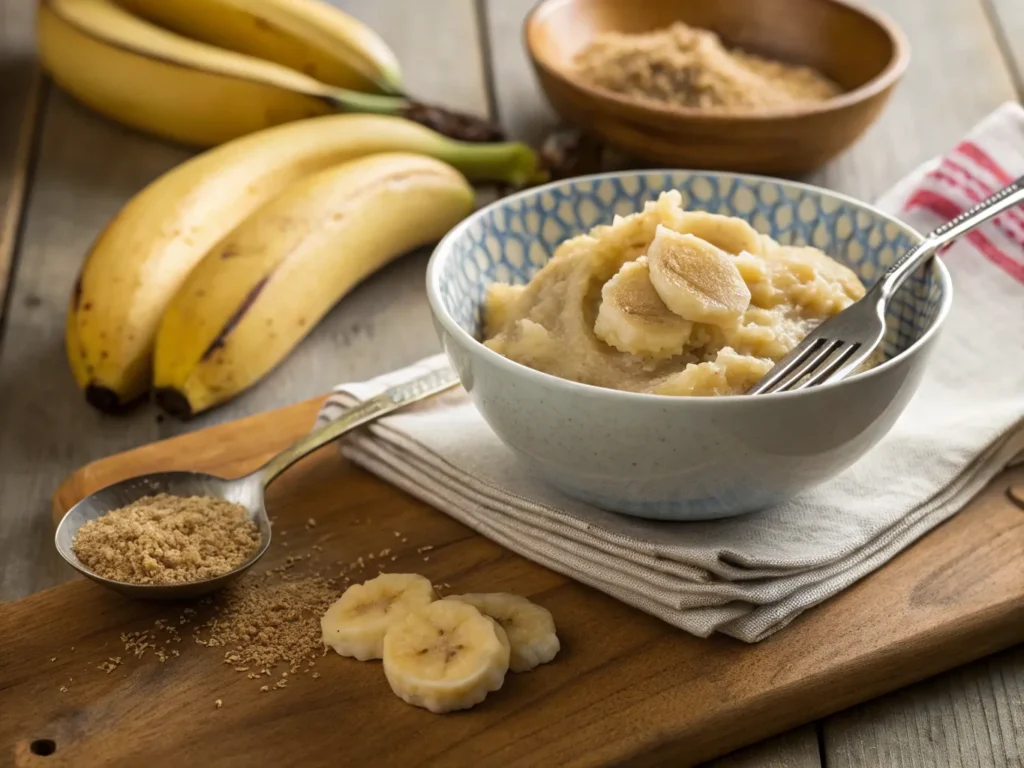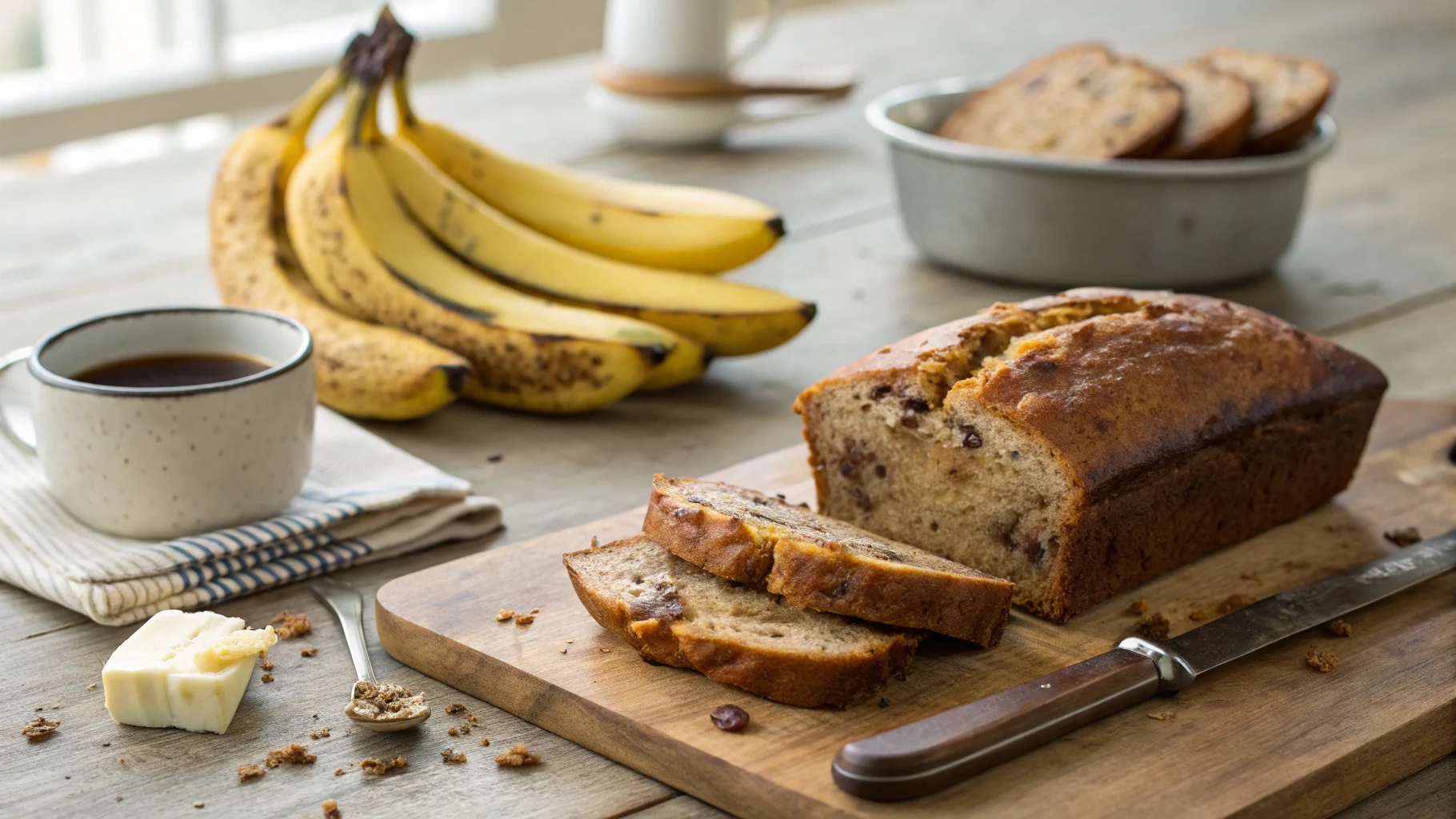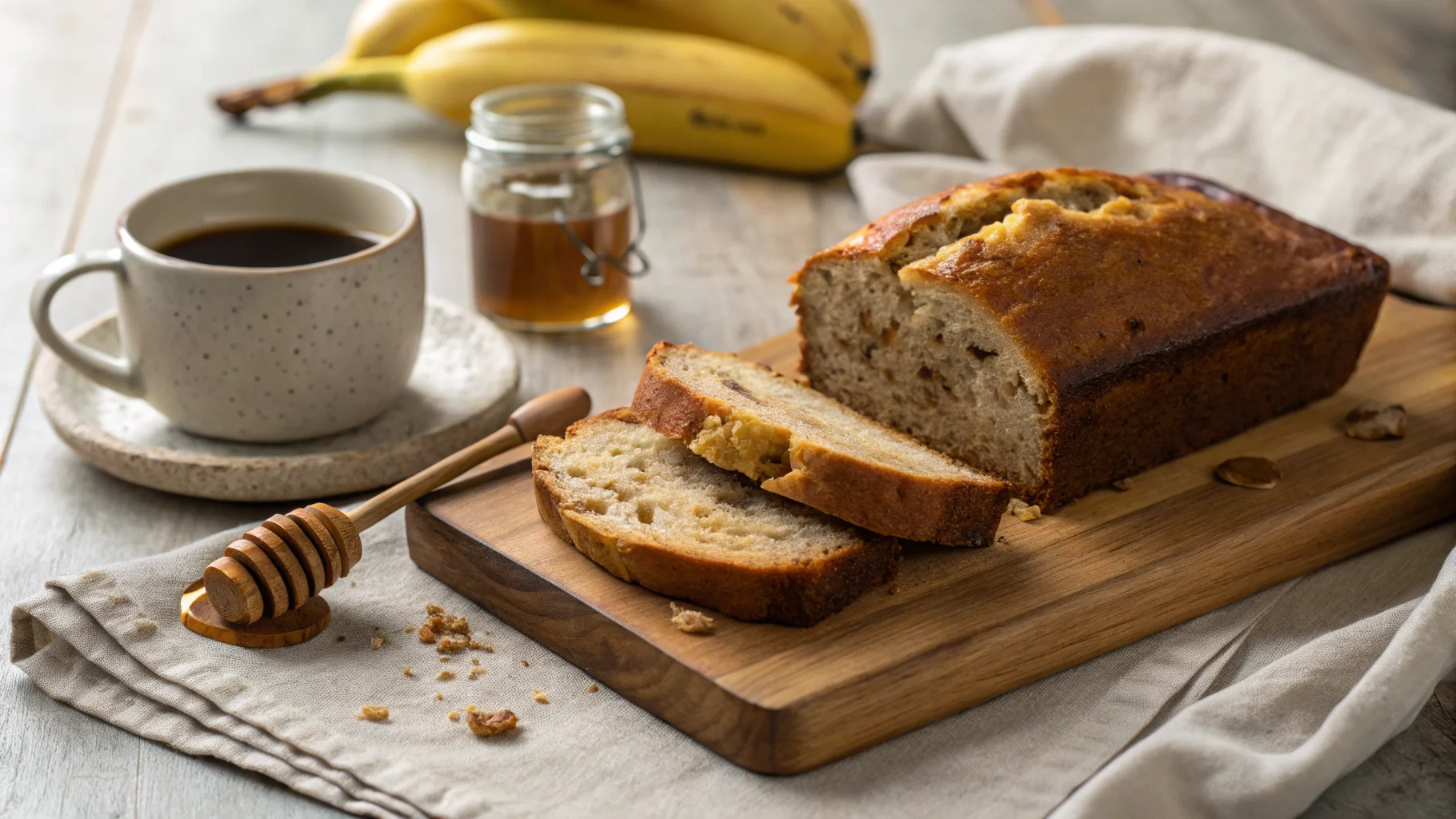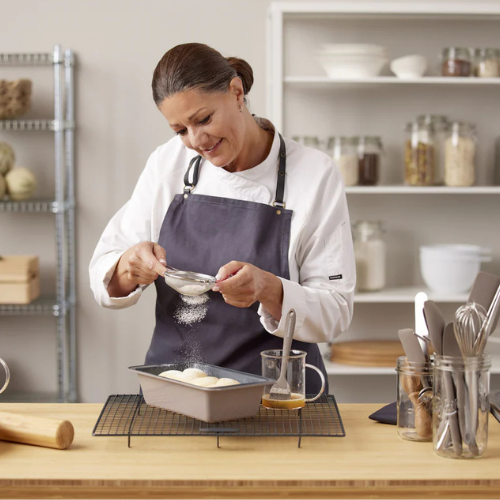Introduction
Banana Bread: A Classic Favorite
Banana bread has been a staple in American kitchens for generations, but why are older bananas better for banana bread? Whether it’s a go-to breakfast, a comforting snack, or a way to use up leftover bananas, this beloved baked good is always a hit. Many home bakers swear by using overripe bananas, but what makes them the best choice?
The Common Baking Question
If you’ve ever followed a banana bread recipe, you’ve likely noticed that it calls for overripe bananas. Some people might wonder if they can use fresh bananas instead, but the truth is, the older the banana, the better the bread.
The Science Behind Ripening
As bananas age, they go through a natural process where their starch turns into sugar, making them sweeter and softer. This change enhances the flavor of the bread while also improving its texture. Additionally, the breakdown of the banana’s structure makes it easier to mix into the batter.
Why Are Older Bananas Better for Banana Bread?
Overripe bananas offer three key advantages:
- Sweeter flavor – The natural sugars in the banana intensify, making the bread more delicious.
- Moist texture – Soft bananas add extra moisture, preventing the bread from drying out.
- Effortless mixing – Older bananas mash easily, ensuring a smooth, lump-free batter.
In the next section, we’ll dive into the science of banana ripening and why it plays such a crucial role in baking.
The Science of Ripening Bananas
The Chemistry of Deliciousness: How Bananas Transform as They Age
Bananas don’t just change color as they ripen—they undergo significant chemical transformations. These changes affect their taste, texture, and usability in baking.
Starch Conversion to Sugar
Bananas start out with a high starch content, which gives them a firm texture and mild flavor. As they ripen:
- Amylase enzymes break down the starch into simple sugars.
- The banana’s natural sweetness increases, reducing the need for added sugar.
- The texture softens, making it easier to mash and incorporate into batter.
This process is what makes older bananas ideal for baking. A green banana has a starchy, almost bland taste, but a brown banana is rich in fruity sweetness.
Ethylene Gas and Enzyme Activity
The ripening process is triggered by ethylene gas, a natural plant hormone. This gas:
- Signals the banana to produce enzymes like pectinase and amylase.
- Causes the fruit to soften by breaking down pectin, the substance that holds plant cells together.
- Speeds up the breakdown of starches into sugars, enhancing the fruit’s sweetness.
Because of ethylene’s effects, bananas go from firm and slightly bitter to soft and ultra-sweet within days.
Development of Complex Flavors
Older bananas develop unique flavors that are absent in their underripe counterparts. As they ripen:
- The increased sugar content creates hints of honey and caramel.
- The breakdown of starches leads to subtle vanilla and rum-like notes.
- The banana’s overall aroma intensifies, making it the star ingredient in banana bread.
These complex flavors make overripe bananas a superior choice for baking, as they naturally enhance the bread’s taste.
The Ripeness Spectrum
Not all bananas are at the ideal ripeness for baking. Understanding the different stages of ripening helps determine the best time to use them:
- Green Bananas – Too firm and starchy, with little sweetness.
- Yellow Bananas with a Hint of Green – Slightly sweet but still too firm for baking.
- Mostly Yellow Bananas with Brown Spots – Ideal for eating, but not quite soft enough for banana bread.
- Bananas with a Mostly Brown or Black Peel – Perfect for baking, as they are soft, sweet, and packed with flavor.
Bananas at the last stage are the best choice for banana bread. Their high sugar content enhances the bread’s taste, while their softness ensures a smooth batter.
In the next section, we’ll explore the specific benefits of using overripe bananas in banana bread and how they affect the final product.

From Brown Spots to Baking Gold: Why Overripe Bananas Make the Best Banana Bread
Banana bread is one of those classic recipes that benefits from using the right ingredients. While some baked goods require precision with fresh produce, banana bread thrives when you use older bananas. Many bakers wonder, why are older bananas better for banana bread? The answer lies in their enhanced sweetness, superior moisture content, and ease of incorporation.
Enhanced Sweetness and Flavor
Overripe Bananas Offer the Most Intense Banana Flavor
As bananas ripen, their starches break down into sugars, which increases their natural sweetness. This process creates a richer, more complex flavor that enhances banana bread. A green or just-ripe banana lacks this deep, caramelized sweetness, which means the final product will taste bland.
- Overripe bananas contain higher levels of fructose and glucose, giving them a more intense flavor.
- The breakdown of starches also produces subtle vanilla and honey-like notes, making the bread more aromatic.
- Their deep, sweet taste ensures that the banana flavor stands out, even when mixed with flour, eggs, and other ingredients.
Less Need for Added Sugar
One of the biggest benefits of using older bananas is their natural sweetness, which reduces the need for extra sugar. Many banana bread recipes call for a significant amount of sugar, but if your bananas are perfectly overripe, you can cut back on the added sweeteners without sacrificing taste.
- A naturally sweet batter means healthier banana bread with fewer processed sugars.
- Less added sugar enhances the banana’s natural depth of flavor instead of overpowering it.
- Using overripe bananas allows for better balance between sweetness and other flavors in the bread.
For anyone wondering, why are older bananas better for banana bread?, their intensified natural sugars make all the difference. The result is a loaf that tastes rich, sweet, and deeply satisfying.
Superior Moisture Content
Soft, Sugary Flesh Creates Moist Banana Bread
Overripe bananas are much softer than their underripe counterparts, making them ideal for baking. The increased sugar content also helps them retain moisture, which is essential for a tender, moist loaf.
- Dry banana bread often comes from using underripe bananas, which lack enough moisture.
- Older bananas have a high water content, which naturally hydrates the batter.
- The soft texture allows them to blend effortlessly with other wet ingredients, preventing a dry or crumbly loaf.
A More Tender and Less Dry Final Product
Banana bread should have a soft, delicate crumb, not a dense or dry texture. Because overripe bananas contain more moisture, they contribute to a bread that stays fresh longer.
- The additional moisture creates a light, tender texture in every slice.
- It prevents the bread from becoming stiff or crumbly after a day or two.
- Even with extended baking times, the bread remains moist and flavorful rather than drying out.
If you’ve ever had banana bread that felt dry or flavorless, the culprit may have been bananas that were not ripe enough. This is another reason why older bananas are always the best choice.
Easy Incorporation and Smooth Texture
Overripe Bananas Mash and Blend Effortlessly
One of the biggest advantages of older bananas is their soft, creamy consistency. This makes them incredibly easy to mash and mix into batter, ensuring even distribution of banana flavor throughout the bread.
- No need for a blender or food processor—a simple fork is enough to mash them into a smooth consistency.
- Their softness allows them to blend seamlessly with other ingredients, preventing lumps in the batter.
- Underripe bananas, on the other hand, can be too firm and difficult to mash, leading to uneven texture.

A Smoother, More Uniform Texture in the Final Product
If you’ve ever had banana bread with chunks of banana that didn’t fully mix in, it’s likely because the bananas weren’t ripe enough. Overripe bananas eliminate this issue, leading to a consistently smooth and even texture throughout the loaf.
- The softness ensures the banana flavor is evenly distributed, so every bite tastes just as good as the last.
- The final bread has a moist, tender crumb, rather than being overly dense or chewy.
- Older bananas contribute to the signature soft, melt-in-your-mouth texture that makes banana bread so irresistible.
For those still asking, why are older bananas better for banana bread?, the answer is simple: they make the baking process easier and produce a far better texture.
Maximizing Your Banana Bread Potential: Tips and Tricks for Overripe Bananas
Even though overripe bananas are best for banana bread, knowing how to identify, ripen, and store them properly makes a big difference. Many bakers ask, why are older bananas better for banana bread? The answer lies in their sweetness, moisture, and ease of use, but making the most of them requires a little know-how.
Identifying the Perfect Overripe Banana
What Does a Perfect Overripe Banana Look Like?
Not all bananas reach the ideal stage for baking at the same time. To ensure the best results:
- Look for bananas with brown or black peels—the darker, the better.
- The texture should be soft and slightly mushy, but not leaking or overly slimy.
- The banana should smell sweet and fragrant, without any sour or fermented odors.
Are Black Bananas Safe to Use?
Many people hesitate to use bananas with blackened peels, assuming they’ve gone bad. However, completely black bananas are often at peak ripeness for baking.
- As long as there’s no mold or foul smell, black bananas are safe.
- If the inside has dark spots but no mold, it’s still good to use.
- If the banana is oozing liquid or smells fermented, it has spoiled and should be discarded.
For the best banana bread, always aim for bananas that are soft, brown, and extra sweet.
What to Do If Your Bananas Are Not Ripe Enough
Speeding Up the Ripening Process
If your bananas aren’t quite ripe but you need them for banana bread, there are several ways to speed up the process:
- Paper Bag Method – Place bananas in a brown paper bag with an apple or ripe banana. The ethylene gas released will accelerate ripening.
- Oven Method – Bake bananas at 300°F (150°C) for 15-20 minutes until the peels turn black. This softens them and brings out their natural sweetness.
- Microwave Method – Poke holes in the peel and microwave on low power for 30-second intervals until soft.
The Roasting Hack for Enhanced Flavor
For an even deeper, caramelized banana flavor, try roasting them.
- Place unpeeled bananas on a baking sheet.
- Roast at 350°F (175°C) for 15-20 minutes.
- Let them cool before peeling and mashing.
Roasting enhances the bananas’ sweetness and complexity, making banana bread even better.
Storing Overripe Bananas
Freezing Overripe Bananas for Future Use
If you have too many ripe bananas but aren’t ready to bake, freezing them is the best solution.
- Peel the bananas before freezing to avoid a messy situation later.
- Place them in an airtight container or freezer bag to prevent freezer burn.
- Label with the date to track freshness—frozen bananas last up to 3 months.
How to Use Frozen Bananas
When you’re ready to bake:
- Thaw at room temperature for 15-30 minutes or microwave for 30 seconds.
- If there’s excess liquid, you can drain some off or mix it into the batter for extra moisture.
- Frozen bananas may look unappetizing, but they’re perfect for banana bread.
Freezing ensures you always have ripe bananas ready for baking, reducing food waste while keeping your favorite recipe accessible.
Conclusion
So, why are older bananas better for banana bread? Their natural sweetness, increased moisture, and smooth texture make them the best choice. If your bananas aren’t ripe enough, simple tricks like using a paper bag or oven-ripening can help. Additionally, freezing bananas allows you to keep ripe fruit on hand for whenever the baking mood strikes.
The best banana bread starts with perfectly overripe bananas, so don’t hesitate to let them darken before baking.
Frequently Asked Questions About Using Overripe Bananas
Many bakers have questions about how ripe bananas should be for banana bread. Below are some of the most common inquiries.
Why do you use old bananas for banana bread?
Overripe bananas are sweeter and softer, making them easier to mash and blend into batter. Their high sugar content enhances the bread’s flavor while reducing the need for added sugar.
What stage of bananas are best for banana bread?
The best bananas for banana bread have brown or black peels, with a soft, slightly mushy texture. These bananas contain more natural sugars and moisture, leading to a better taste and texture.
What is the number one mistake made when making banana bread?
Using underripe bananas is a common mistake. Green or firm bananas lack the necessary sweetness and moisture, resulting in less flavorful, drier banana bread.
How old should bananas be for bread?
Bananas should be old enough to have brown spots and feel soft when pressed. They can even be completely black, as long as they aren’t moldy or giving off an off-putting odor.
Using the right bananas ensures that your banana bread turns out sweet, moist, and delicious every time.




